Decompression Sickness
As you learned in the Physics section, the air we breathe consists of 78% nitrogen. This is an inert gas, and has no negative effects while we are at the surface.
While underwater, this normally harmless gas poses two potential problems for divers. The most serious condition is decompression sickness, which is often referred to as "the bends."
This page will explain how decompression sickness occurs, how to prevent it, and proper first aid procedures to follow.
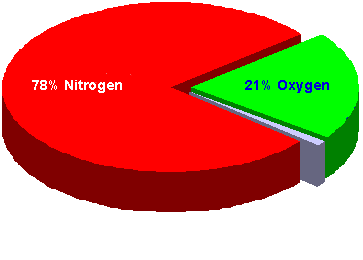
Ingassing & Offgassing
Liquids contain dissolved gasses, and the amount of gas dissolved depends on the pressure surrounding the liquid. Carbonated beverages such as soda are an excellent example.
Soda is carbonated by forcing pressurized carbon dioxide against its surface. The pressure of the carbon dioxide is greater than the pressure of the gasses already dissolved in the soda, so the soda absorbs the carbon dioxide until the pressure of the absorbed gas and surrounding gas reach equilibrium. This process is called ingassing.
When you open a soda bottle, the pressure above the soda is less than the pressure of the dissolved carbon dioxide. This allows the soda to release, or offgas, its excess carbon dioxide. It continues to offgas until equilibrium occurs and the soda becomes flat.
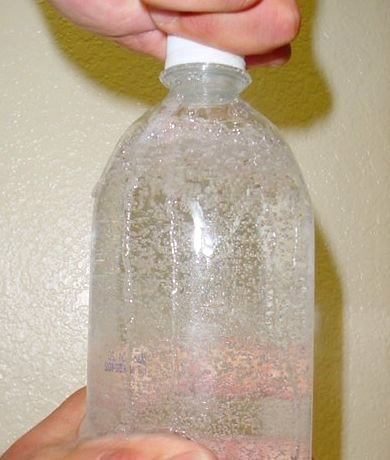
Dive Depth & Nitrogen Absorption
Our body tissues and fluids contain dissolved nitrogen. Like a bottle of soda, the amount of nitrogen our bodies can absorb changes when our surrounding pressure increases or decreases.
As you learned in Chapter 4, the ambient pressure increases when we descend. As a result, our bodies ingas additional nitrogen while diving. How much is absorbed depends on several factors, with dive depth and duration being the most significant.
As we ascend, the ambient pressure decreases. This allows our bodies to offgas the nitrogen absorbed while at depth. As long as the amount of dissolved nitrogen is within safe limits and the pressure decreases slowly, the offgassing occurs safely and with no complications.


What Is Decompression Sickness
When nitrogen is offgassed faster than your body can eliminate it from your system, it expands and forms bubbles in your tissues and fluids. These bubbles cause a condition called decompression sickness (DCS), which is also known as "the bends."
Nitrogen bubbles that form in your bloodstream can clot or impede the circulation of blood through your circulatory system. This can prevent oxygenated blood from reaching its destination and cause serious complications. Bubbles that form in your body's tissues can interfere with movement and trigger defensive reactions.
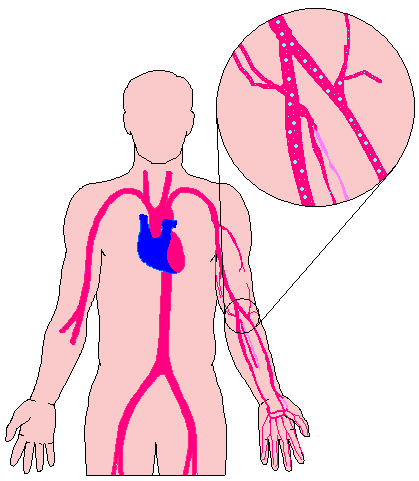
Factors That Increase Risk of Decompression Sickness
The three major factors that increase the risk of decompression sickness are depth, dive duration, and ascent rate.
As you descend, the ambient pressure increases. This increases the amount of nitrogen your body ingasses, and also increases the rate of absorption. Since ingassing occurs over time, your dive's duration also affects how much nitrogen you absorb.
Another factor is your ascent rate, which influences the rate of pressure reduction. A slower ascent rate slows down the offgassing, and allows the body to eliminate the excess nitrogen through your respiration before it expands in your body.
Other factors that increase your risk of decompression sickness include dehydration, fatigue, cold water temperature, age, scar tissue, and obesity. These factors won't cause decompression sickness on their own, but can increase the risk of the primary factors of depth, dive time, and ascent rate.
Symptoms of Decompression Sickness
Decompression sickness can affect almost any part of the body, so its symptoms depend on the afflicted area. Typical symptoms include:
- Skin rash
- Joint pain
- Numbness
- Extreme fatigue
- Breathing difficulty or coughing
- Paralysis
- Unconsciousness
Symptoms may take as long as a day to become noticeable, and may be subtle at first. Without treatment, the symptoms will persist and become more serious. Even if the symptoms appear mild, it's important to get proper treatment because even the mildest case is a serious condition. Fortunately, most divers will completely recover after treatment with no long-term side effects.
Treating Decompression Sickness
If you suspect you have decompression sickness, you must remain out of the water and seek medical treatment. Do not return to the water to decompress, as you are at risk of unconsciousness and drowning.
Victims of decompression sickness must be treated in a hyperbaric chamber as soon as possible. Administer 100% oxygen to the victim before and during transport. Be prepared to treat for shock and perform CPR if necessary.
During hyperbaric treatment, the diver is placed in a pressurized chamber to compress the nitrogen bubbles. The pressure is then slowly released at a rate that allows the patient to safely offgas the nitrogen. Treatment usually lasts several hours, and multiple treatments may be required for more serious conditions.
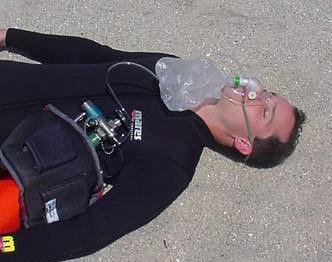
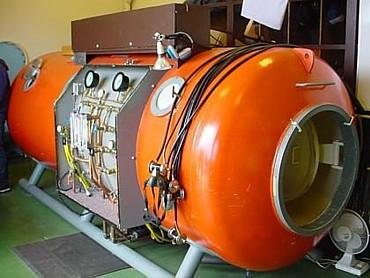
Preventing Decompression Sickness
Decompression sickness is not 100% preventable. However, by following the recommended preventative measures, you can minimize your risk.
- Dive within depth and time limits.
- Chapter 6 will teach you how to use dive tables and computers to determine the maximum dive time for your planned depth. You should use these tools prior to every dive.
- Ascend slowly from every dive.
- Many DCS cases are the result of a rapid ascent to the surface. To reduce the risk, ascend at a rate no faster than 30 feet per minute.
- Perform a safety stop before surfacing.
- Before surfacing, stop at 15 feet for 3 to 5 minutes. This allows additional time for your body to offgas nitrogen before surfacing.
- Avoid high altitudes after diving.
- You should wait at least 12 hours, and preferably 24, before flying or driving to high altitudes. Atmospheric pressure continues to decrease as you ascend in the atmosphere, so high altitude can cause decompression sickness if your body hasn't had time to sufficiently offgas excess nitrogen.
- Stay hydrated.
- Statistics show that in 80% of DCS cases, the victim is dehydrated. You can reduce this risk by drinking plenty of water and avoiding alcohol and caffeine before and after diving.


